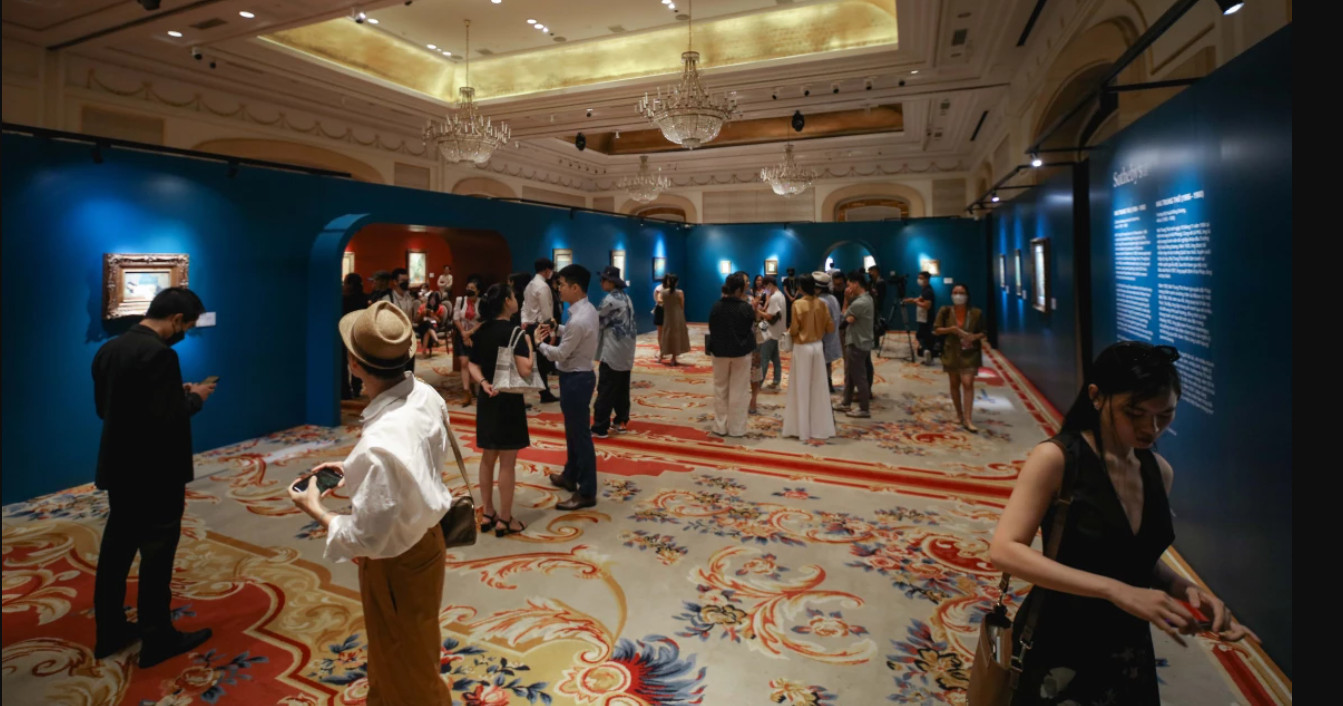
In Vietnam, paintings are traded under different modes – via gallery, direct transactions with artists, hand-to-hand sales or via brokers, each of which has advantages and disadvantages. Vietnam lacks professional curators and there is no professional trading floor. Meanwhile, the market is distorted by art forgery.
Fake paintings
A high number of paintings by famous painters have been sold at high prices on international auction floors. However, the concern about fake paintings still exists.
Commenting about the counterfeit painting ‘Nang he’ (Summer Sun) by painter Le Van De, Ngo Kim Khoi, a respected researcher, said the painting was copied in a clumsy way with inaccurate lines. The signature and seal are careless. The words ‘Hanoi 1932’ are at the bottom of the painting. But in 1932, the painter was in France, not in Hanoi.
The fake painting ‘Nha tranh goc mit’ (Thatched cottage and jackfruit tree) by Nguyen Van Ti at the Hanoi Fine Arts Museum was introduced by Sotheby’s at the price of 700,000-1 million HKD (VND2-2.9 billion). However, the auction house later had to withdraw the fake painting from the auction because of public backlash.
A veteran painting collector in Hanoi said fake paintings, copied paintings, real and counterfeit painting are displayed at exhibitions, auctions and even international auctions, which causes doubt among collectors.
“The fine arts market is connected by confidence, and when confidence is shaken, the market will collapse,” he said.
“There are fewer and fewer painting lovers and collectors,” he said, adding that the market will get even worse if it cannot be professionalized and confidence cannot be restored.
Market professionalization
The sky high prices of millions of dollars are the prices of Indochinese paintings. Foreign and Vietnamese collectors love Indochina’s paintings because they depict historic times and stories.
Collectors feel safe when buying Indochinese patients because most Indochinese painters have passed away, so the number of paintings is limited.
Ngoc Dai, also a veteran collector, said there was a time when people rushed to buy these paintings for family collections and to try their luck. In many cases, the prices of paintings increased by 5-6 times compared with the buying prices.
However, things are different now. Investors cannot expect such profit anymore. Cash now is now heading for contemporary paintings and this brings great opportunities to young painters.
“If there are intermediary units who are prestigious and provide high-quality services, then discovering good painters and bringing good paintings to the public will no longer be a difficulty,” Dai said.
However, the contemporary painting market in Vietnam is new and it will take more time to become professional.
According to Dai, the Vietnamese market lacks experts. For example, painters set selling prices just by feelings, because there is no expert who helps assess the value of paintings. In many cases, painters set sky high prices initially, but later slash the prices sharply because of financial problems.
The artworks with realist style remain the most attractive to collectors and contemporary artists will have to be patient to wait for clients’ taste to change, according to contemporary painting collector Pham Suu.
The Vietnamese painting market remains fledgling with many complicated problems , but it has potential. The big auctioneers such as Sotheby’s, Christie’s and Phillips are selling Vietnamese paintings at high prices and have staff studying the art and market of Vietnam. Once they join the market, a professional playing field will form and develop, while curators will be trained methodically.
Curators play a very important role in the painting market as they act as a bridge between painters and the public, painters and auctioneers, and painters and painters in the current choosy market.
Dong Phong